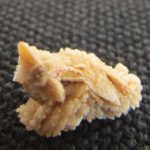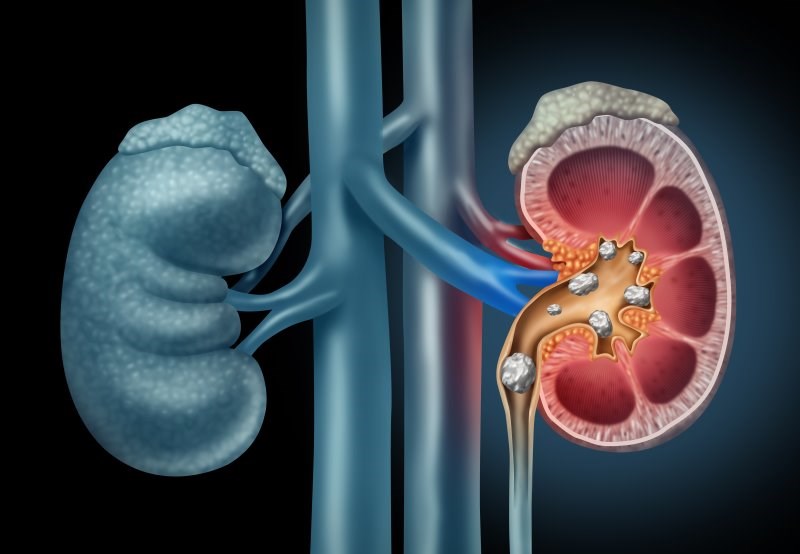
According to the EDGE Research consortium, both techniques should be in the armamentarium of the urologist.
In the May 2018 issue of the Journal of Urology, the EDGE Research Consortium formally published their trial results on the efficacy of dusting vs basketing during ureteroscopy. The study found no significant differences between the procedures with respect to stone-free and complication rates, hospital readmissions, or additional procedures among patients with renal stones 5 to 20 mm in diameter. Renal & Urology News asked 3 experts with experience in the procedures to offer their perspective: Khurshid Ghani, MD, MS, of the University of Michigan in Ann Arbor, Sara Best, MD, of the University of Wisconsin in Madison, and Jodi Antonelli, MD, of the University of Texas Southwestern Medical Center in Dallas. All participated in a Dusting vs Basketing prime time debate at the 2017 American Urological Association annual meeting in Boston.
What is the top goal of ureteroscopy (URS)?
Dr Best and Dr Antonelli: The top goals of any stone surgery have long been the safe resolution of renal obstruction and obtaining a stone-free status for the patient. However, increased use of computed tomograpy has shown us that our truly “stone-free” rates aren’t as high as we thought. Studies lead-authored by Amanda Macejko (2009), Christopher Rippel (2012), and Andrew Portis (2006) suggest that even after diligent efforts, only 38% to 54% of patients were free of stones. In a previous study, Ben Chew and colleagues from the EDGE Consortium found that in 232 patients with residual fragments after ureteroscopy, 15% had complications and 29% required another procedure.
Stone-free rates are still not as high as we want. Drs Kristina Penniston and Stephen Nakada [of the University of Wisconsin in Madison] are working with a multinational group of endourologists to study quality of life outcomes in stone formers. Their work may help further elucidate the role “stone-free status” plays in the overall lives of our patients and give us further strategies to improve our patients’ experiences.
Dr Ghani: Although optimal stone clearance is the goal for urologists, we must consider patients’ preferences and quality of life. Stone-free status may not matter as much to the patient who is focused on avoiding pain or missing work and prefers the least traumatic ureteroscopy. Dr Manoj Monga’s group [at Cleveland Clinic] published an interesting study which showed that patients preferred shock wave lithotripsy to URS, even when informed the stone-free rate was lower.
What are the advantages of dusting?
Dr Ghani: In the EDGE study, the operating time was significantly lower in the dusting group despite that group having larger stones. We’ve noticed that pure dusting in appropriately selected patients also is faster in our practice.
In select cases, pure dusting results in less trauma than pure basketing because no access sheath is placed. In about 30% of dusting patients, we also may be able to avoid a stent and its accompanying pain, which is a huge quality of life benefit. Stent problems drive costly emergency department visits after URS.
What are the advantages of basketing?
Dr Best and Dr Antonelli: Basketing potentially results in a higher stone-free rate because stones are actively extracted. Collected stones then can be analyzed for composition. Information on stone type may suggest underlying medical conditions contributing to stone formation, such as renal tubular acidosis. Results also can guide targeted therapy, such as alkalinization for uric acid stones.
While dusting is likely faster to perform, patients can be left with residual stone fragments that have to be passed. Some surgeons also worry that significant heat can be generated within the collecting system when high power, high frequency lasers are used.
Have the published EDGE study findings settled which approach is best?
Dr Ghani: Although the EDGE study findings provided valuable information, stone size was a confounder. The dusting group had much larger stones than the basketing group: stone area was 96.1 vs 63.3 mm2. This difference might have contributed to the finding of more residual fragments after dusting.
In addition, urologists frequently stage the procedure when larger renal stones are treated to get optimal stone-free outcomes. However, staged procedures were not allowed in the EDGE study. I wonder whether the stone-free rate in the dusting group would have been better with staging.
Dr Best and Dr Antonelli: The EDGE Consortium studied ureteroscopy techniques prospectively and targeted some key questions. Now we can more accurately counsel patients and guide expectations.
Some argue that both dusting and basketing are needed, that equipment, stone size, and stone composition dictate the approach. Would you agree?
Dr Best and Dr Antonelli: Studies to date tell us that there is likely a role for both basketing and dusting. Some stones, such as those composed of calcium oxalate dihydrate, are very brittle and may more easily disintegrate with lithotripsy. Other stones, such as calcium oxalate monohydrate, are very hard to dust by any method.
Since we know that most stones are of mixed composition, a reasonable approach may be to try to dust a stone first to decrease its size, and then change the laser settings to fragment the stone into smaller pieces for extraction. This approach works well for larger stones, which are increasingly being treated ureteroscopically.
Dr Ghani: I completely agree that you can’t say one strategy will work best all of the time for renal stones. You have to adapt and do what is best based on stone durility and patient factors. I predict that many pure basketers over the next few years will start to dust the stone in the beginning, and then retrieve fragments at the end. This will speed up cases for those who do pure retrieval.
What should practicing urologists do?
Dr Best and Dr Antonelli: Skills, equipment, and resources vary, so there is no “one-size-fits-all” approach to URS. Urologist should consider their institution’s successes when deciding how to approach a stone case.
Dr Ghani: Urologists need to learn about the parameters available in new generation holmium systems. By tweaking pulse joule, frequency, and pulse width, they can optimize stone fragmentation. For those who like to try and do pure dusting like me, the key to a successful outcome is how well the popcorn technique is employed at the end.
Are new technologies on the horizon that will change the landscape?
Dr Ghani: We are witnessing a renaissance in laser technology in endourology, and it is an exciting time. We anticipate new pulse modulation and optimization systems, as well as laser fiber technologies that will allow us to really achieve a sand effect with dusting. New scopes and devices that will aid the dusting technique, such as a suction device, are in development.
Dr Best and Dr Antonelli: Our colleagues in practice and industry are working to help us define and achieve optimal outcomes after ureteroscopy. We’d like to see future innovations that help us assess and manage intra-renal pressures and temperatures to avoid complications such as sepsis and pain. Pioneering work that identifies factors influencing patient experience and quality of life would be welcome.

Khurshid Ghani, MD, MS, is associate professor at the University of Michigan

Sara L. Best, MD, is associate professor at the University of Wisconsin School of Medicine and Public Health

Jodi A. Antonelli, MD, is assistant professor at the University of Texas Southwestern Medical Center





